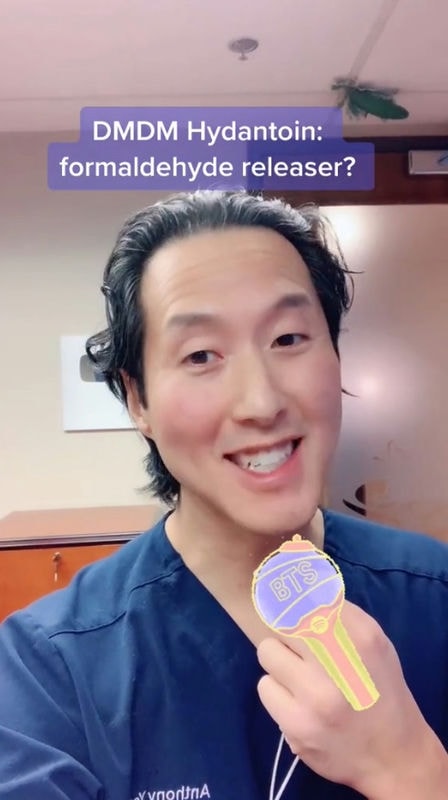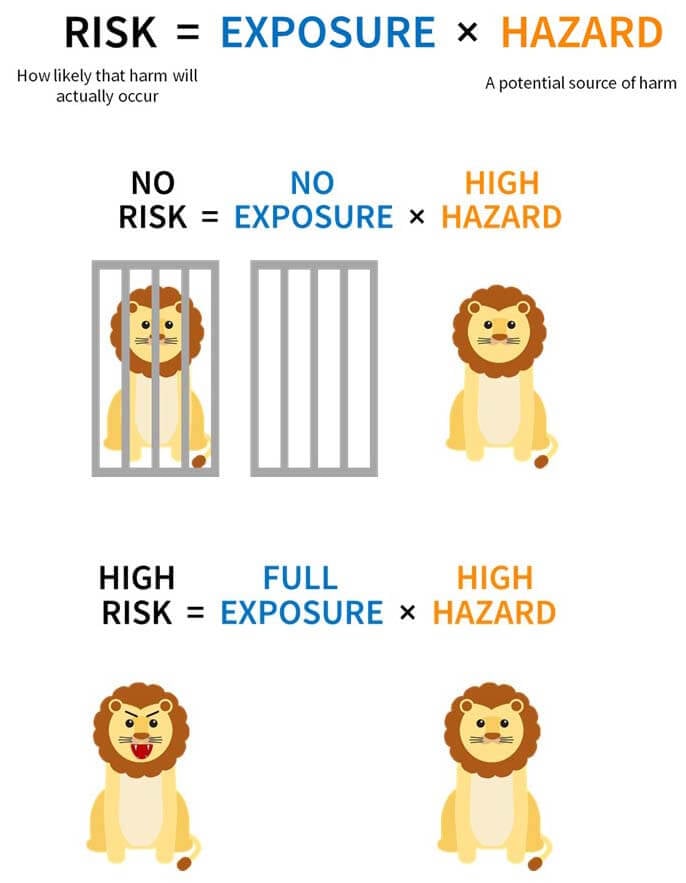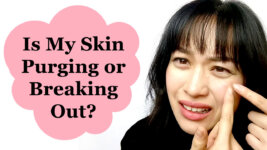DMDM hydantoin is a preservative commonly found in shampoos. It started getting a lot of attention in 2021, thanks to a number of lawsuits surrounding hair loss – so let’s talk about the science behind it and whether it’s safe.
(This post is partly based off a longer video about haircare misinformation on TikTok, which also covers sulfates, silicones, testing heat protectants with fire, benzene, washing your hair twice, and so much more.)

I first came across this topic when some people sent me a video from Dr Tony Youn, a plastic surgeon who has a huge audience on multiple platforms. It was actually one of the reasons I started making short-form debunking videos on TikTok…
Dr Youn: “DMDM hydantoin is considered a formaldehyde releaser, which doesn’t sound so healthy for your scalp.”

This is Dr Tony Youn, who calls himself “America’s Holistic Plastic Surgeon™”. I’ve heard that his content on plastic surgery is pretty interesting and informative, but unfortunately, when he talks about beauty products, there’s a lot of misinformation. It’s very much in the vein of clean beauty pseudoscience, which I’ve covered many times before, and it’s worth mentioning that he owns a clean beauty brand.
Related post: Clean Beauty Is Wrong and Won’t Give Us Safer Products
It’s also possible that he promotes it due to overconfidence in fields where he doesn’t have expertise, which is an issue with many medical doctors with large social media followings.
Before we keep going, I want to talk a bit about medical doctors and social media misinformation. I’ve been told by some people that I’m a bit too mean to medical doctors who spread misinformation online, but I do think that they should be held to a higher standard.
First off, I don’t debunk medical doctors because I “hate doctors” or I’m “jealous of doctors”. Many of my misinformation-debunking friends online are medical doctors, so this isn’t a blanket criticism of doctors – just the ones who spread misinformation.
I tend to be harsher on medical doctors over other influencers because:
- They have the privilege of being educated enough to know better (I also consider myself as privileged in being able to do a PhD, so I also hold myself and other scientists to this higher standard).
- Authority bias superpowers misinformation, and makes it harder to undo.
A lot of doctors use their authority to build their platform, which is valid – it’s useful to tell people where your expertise is coming from, and what actually informs your content. ]
It’s also a useful shortcut to stop people from dismissing your content, because people tend to respect titles, and I think is valid as well. It’s one of the reasons I mention my PhD at the start of a lot of my posts. As an Asian woman with purple hair who looks younger than she is (although debunking misinformation full-time has undoubtedly aged me), I get disrespected a lot, both online and offline. Waving my PhD around a bit has become a way to get people to actually consider my arguments, before dismissing me for very superficial reasons.
But in my opinion, if you benefit from that extra authority bias, you also need to be responsible about what you say. That authority bias that comes with having a title, whether MD or PhD, really superpowers any misinformation you spread. And a lot of doctors on social media kind of play that up: they dress in scrubs, or they film in front of their wall of medical diplomas. I really just think that with great power comes great responsibility.
DMDM hydantoin and formaldehyde
Dr Tony Youn: “DMDM hydantoin is considered a formaldehyde releaser, which doesn’t sound so healthy for your scalp.”
The way he says “considered a formaldehyde releaser” is a bit strange – DMDM hydantoin simply IS a formaldehyde releaser. It’s how it works.
DMDM hydantoin is a preservative, as are the other formaldehyde releasers he lists on screen: quaternium-15, “ureas” (not everything with the word “urea” – for example, urea itself isn’t a formaldehyde releaser – I assume he means imidazolidinyl urea and diazolidinyl urea), and benzylhemiformal (incredibly rare in cosmetics).

Preservatives are needed in products to kill microbes, so unsurprisingly, at some level, they’re also going to be harmful to people. The trick is to use an amount low enough to be safe when applied to skin, but high enough to harm microbes when they’re swimming in it – these amounts are calculated by toxicologists based on scientific data.
Related post: US Sunscreens Aren’t Safe in the EU? The Science
So while formaldehyde perhaps sounds bad, and it is bad if you inhale a whole bunch of it (it causes nasal cancers, as discussed in this post about the Not So Pretty episode on nails), it’s safe if you’re exposed to a small enough amount, in the right way – like on your skin rather than up your nose.
Related post: Nail Polish, Miscarriages, Cancer? Not So Pretty Episode 2
This is often referred to as hazard versus risk. A hazard is something that’s harmful in some way, but the actual risk – how much danger you’re in – also depends on exposure. This is often summarised in this equation, if you like maths:
Risk = Hazard x Exposure
Even if a hazard is very high, the overall risk can still be low if the exposure is low enough (see my post about clean beauty for a more in-depth explanation, from an actual toxicologist).
Related post: Clean Beauty Is Wrong and Won’t Give Us Safer Products

Formaldehyde is actually in lots of living things. For example, it’s found in pears, and we produce about 50 grams of formaldehyde a day inside our bodies (about a quarter of a cup). This isn’t great for us, and our bodies have evolved a lot of systems to deal with it, and limit its damage. But the amount of formaldehyde that touches your scalp from a shampoo containing DMDM hydantoin would be a fraction of a milligram. It’s really not that scary in context.
And he should really know this, since he’s a plastic surgeon. He’s familiar with Botox, and the logic is exactly the same. Botox (botulinum toxin) is one of the most toxic substances in the world – somewhere around a few kilograms can kill everyone on Earth. But at the same time, millions of people have had it injected into their faces, and it’s been fine because of exposure: a small enough amount is being injected in the right place.
“Doesn’t sound so healthy”
It’s also frustrating that he says formaldehyde “doesn’t sound so healthy”. Toxicology and biology aren’t based on how something sounds, the feels or the vibes.
I really hope that, as a doctor, he’s not basing his freaking surgical decisions on how things sound. I really hope he’s looking at actual evidence, and it’s disappointing that he isn’t doing that here.
His video is really just playing to people’s fears and biases, which is especially frustrating because it’s the same logic that antivax and anti-science movements exploit: If something sounds bad, it is bad, and you shouldn’t bother looking at evidence – just go with your gut feel.
Debunking clean beauty is a particular passion of mine because of the many links it has to the “traditional” antivax movement from the early 2000s, concerning the MMR vaccine and autism. One of the links is specifically formaldehyde. Infographics promoting fear of cosmetic ingredients and vaccine ingredients often highlight the same information:

Tiny amounts of formaldehyde are in some vaccines, so the logic presented in these infographics is essentially: formaldehyde is risky in some circumstances, so it’s risky in all circumstances, including injecting it into your baby or rubbing it on your body.
It drives me a bit batty that many people interested in public health don’t really see clean beauty as a massive problem. Huge beauty stores like Ulta and Sephora promote clean beauty and incentivise the brands they stock to become “clean”, so a large chunk of the population gets taught this logic from their early teens.
It’ll be really hard to undo all this indoctrination by the time someone needs to decide whether or not to inject a vaccine with a tiny, tiny amount of formaldehyde into their precious baby.
Class action lawsuits
Dr Youn: “And there actually is a class-action lawsuit going on right now.”
Class-action lawsuits are mentioned in a lot of social media posts warning about particular ingredients. But anyone can bring a class-action lawsuit – it doesn’t tell you if they have a good case.
And even if they settle and get a whole bunch of money, it’s not an admission of guilt. Settlements happen all the time for other reasons, like avoiding a long, protracted, expensive lawsuit, and all the bad publicity that comes with it.
For these DMDM hydantoin lawsuits (and many others), it mostly seems to be people with allergies. A small percentage of the population will be allergic almost any ingredient. For formaldehyde, it seems to be below 1% of the population. Formaldehyde can cause itching and hair loss if you’re allergic, but that doesn’t mean it’s causing these for people who aren’t allergic. Allergies are when your body is overreacting to something that’s normally safe.
I’ve noticed a lot more hair loss lawsuits lately, and it’s particularly interesting because many of them involve brands whose formulas haven’t changed much in years, maybe decades.
The explanation that makes the most sense to me is the pandemic. COVID is linked to hair loss, as is stress. Hair loss also varies over time – people tend to lose more hair in spring and less in autumn, and there’s many other causes like pregnancy. Linking hair loss to a specific cause like a shampoo, or a specific ingredient in a shampoo, is really difficult without using science to isolate the variables – in other words, correlation doesn’t mean causation.
Brandolini’s law
Dr Youn’s video is 10 seconds long, but debunking it in my video took around 9 minutes. This is an example of Brandolini’s Law, also known as the bullshit asymmetry principle: it takes an order of magnitude more effort to debunk misinformation than to spread it.
And it’s always harder to debunk misinformation when it comes from someone who you’d expect to be well-informed, like a medical doctor. Then on top of that, there are so many more non-doctors on social media spreading misinformation.
So… please support your local science communicators!
References
European Food Safety Authority. Endogenous formaldehyde turnover in humans compared with exogenous contribution from food sources. EFSA J. 2014;12(2). doi:10.2903/j.efsa.2014.3550
Reingruber H, Pontel LB. Formaldehyde metabolism and its impact on human health. Curr Opin Toxicol. 2018;9:28-34. doi:10.1016/j.cotox.2018.07.001
Diepgen TL, Ofenloch RF, Bruze M, et al. Prevalence of contact allergy in the general population in different European regions. Br J Dermatol. 2016;174(2):319-329. doi:10.1111/bjd.14167






Hi Michelle,
Thank you for writing such informative and accessible articles. I really appreciate you sharing your expertise. As someone who doesn’t have a scientific background, I can easily get sucked into spending money on products that don’t work and are a waste of money and other resources. It’s great to have you on hand explaining the evidence and debunking beauty industry myths. Keep fighting the good fight!
Magdalena
Michelle, thank you so much for this always! It sometimes feels like you’re the only voice of reason in an increasingly frantic and crowded market with so many vested interests. People are so quick to believe everything ‘influencers’ say, especially those with Dr in their name, without questioning any ulterior motives. Given the position that cosmetics and beauty occupies between medicalised products and standard household items, having an independent, scientific voice is more important now than ever 🙂
Woah. I have a Dr. Youn video saved to watch later. It’s about which products to use. I thought a freaking, plastic surgery DOCTOR would know a little something I didn’t.
I was just about to watch it but Dr. Youn claimed it for copyright and it isn’t up anymore 🙁
It should be up again in a couple of days, hopefully! His claim isn’t valid for a video takedown.